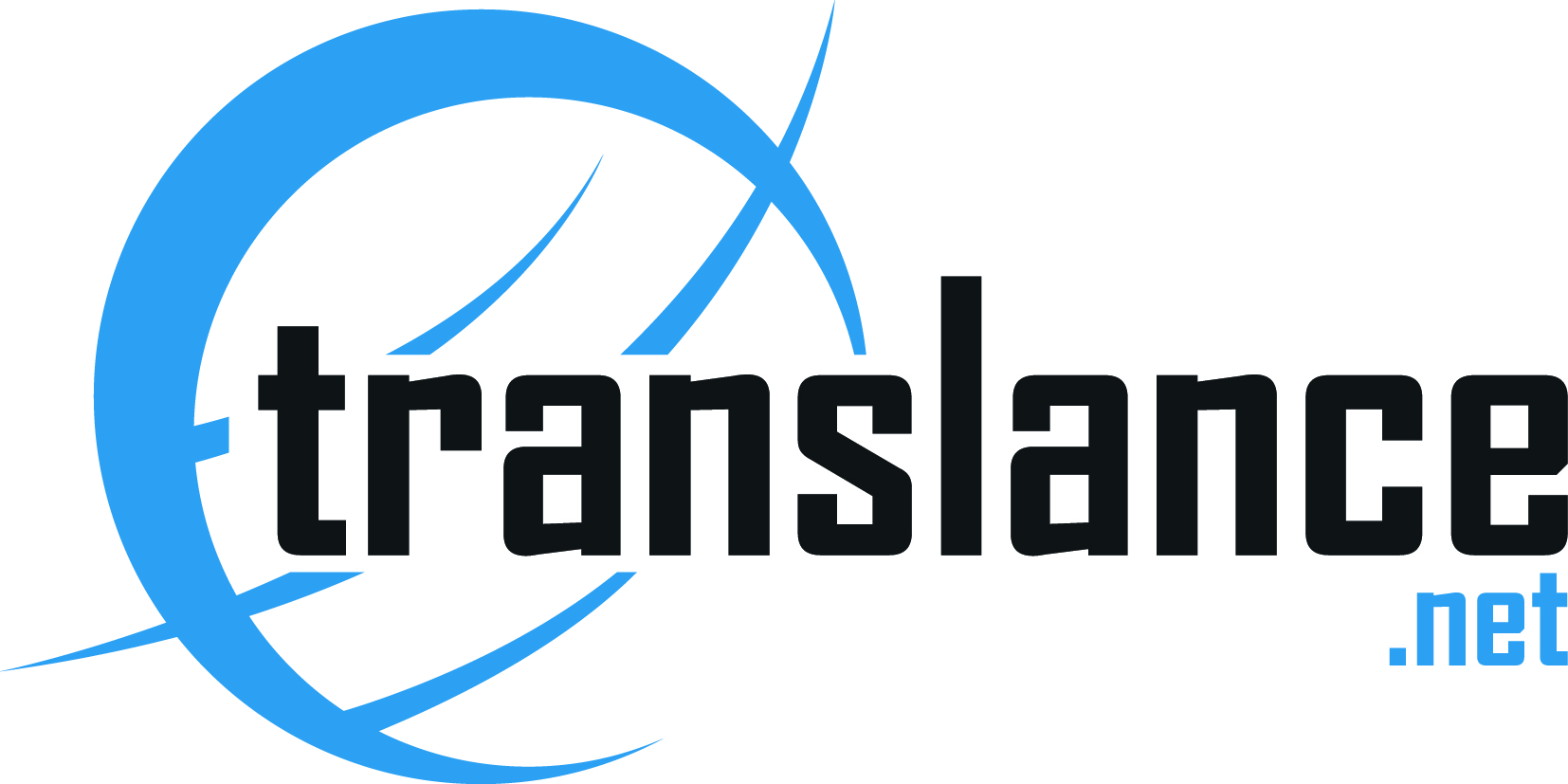Culture for a computerized age
By Julie Goran, Laura LaBerge, and Ramesh Srinivasan
20-25 minutes
________________________________________
Hazard avoidance, powerless client center, and siloed attitudes have since quite a while ago perplexed associations. In a computerized world, taking care of these social issues is never again discretionary.
Deficiencies in authoritative culture are one of the primary obstructions to organization accomplishment in the computerized age. That is a focal finding from McKinsey's ongoing review of worldwide administrators (Exhibit 1), which featured three computerized culture inadequacies: utilitarian and departmental storehouses, a dread of going for broke, and trouble shaping and following up on a solitary perspective on the client.
Display 1
Every deterrent is a long-standing trouble that has turned out to be all the more exorbitant in the advanced age. At the point when hazard avoidance holds influence, underinvestment in key chances and drowsy reactions to brisk changing client needs and market elements can be the outcome. At the point when a brought together comprehension of clients is deficient with regards to, organizations battle to activate representatives around coordinated touchpoints, ventures, and reliable encounters, while frequently neglecting to observe where to best put down their wagers as computerized expands client decision and the moves organizations can make accordingly. What's more, when storehouses describe the association, reactions to quickly advancing client needs are regularly excessively restricted, with key signs missed or followed up on too gradually, just on the grounds that they were seen by the wrong piece of the organization.
Can fixes to culture be made straightforwardly? Or then again does social change rise as per usual as administrators work to refresh system or improve processes?1 as far as we can tell, officials who trust that authoritative societies will change naturally will move too gradually as advanced entrance develops, obscures the limits among parts, and lifts aggressive force. Our examination, which demonstrates that social deterrents connect obviously with negative financial execution (Exhibit 2), bolsters this view. So do the encounters of driving players, for example, BBVA, GE, and Nordstrom, which have indicated what it would seem that when organizations bolster their computerized systems and speculations with intentional endeavors to make their societies progressively receptive to clients, additionally eager to go out on a limb, and better associated crosswise over capacities.
Show 2
Administrators must be proactive in molding and estimating society, moving toward it with a similar meticulousness and order with which they handle operational changes. This incorporates changing auxiliary and strategic components in an association that run counter to the way of life change they are endeavoring to accomplish. The basic social intercession indicates distinguished by respondents our 2016 advanced review—hazard avoidance, client center, and storehouses—are a significant guide for pioneers looking to endure in reshaping their association's way of life. The rest of this article talks about every one of these difficulties thus, illuminating an engaged arrangement of fortifying practices to kick off change.
Determined dangers
Again and again, the executives essayists talk about hazard in wide brush terms, recommending that if officials just empower experimentation and don't rebuff disappointment, everything will deal with itself. Be that as it may, hazard and disappointment significantly provoke us as people. As Ed Catmull of Pixar said in a 2016 McKinsey Quarterly meeting, "Something about disappointment is that it's deviated concerning time. When you think back and see disappointment, you state, 'It made me what I am!' But looking forward, you figure, 'I don't have the foggiest idea what will occur and I would prefer not to fizzle.' The trouble is that when you're running a trial, it's forward looking. We need to make a decent attempt to make it safe to fall flat."
The exercise in careful control Catmull depicted applies to organizations, maybe significantly more than to people. Capital markets have regularly been opposed to speculations that are difficult to comprehend, that fail to meet expectations, or that set aside a long effort to achieve realization. Also, the advanced period has muddled issues: On the one hand, readiness to try, adjust, and to put resources into new, conceivably dangerous zones has turned out to be fundamentally vital. On the other, going for broke has turned out to be all the more alarming in light of the fact that straightforwardness is more prominent, upper hand is less solid, and the expense of disappointment is high, given the commonness of champ take-all elements.
Pioneers planning to strike the correct parity have two basic needs that are commonly fortifying when quick devotee procedures have turned out to be less protected. One is to insert an outlook of hazard taking and development through all positions of the venture. The second is for officials themselves to act strongly once they have settled on a particular advanced play—which may well require evolving attitudes about hazard, and motivating key administrators and sheets to think increasingly like financial speculators.
A hunger for hazard
Building a culture where individuals feel great attempting things that may come up short begins with senior pioneers' frames of mind and job demonstrating. They should break the present state of affairs of progressive basic leadership, defeat an emphasis on streamlining as opposed to advancing, and commend gaining from disappointment. It helps impressively when administrators make it unmistakable through activities that they trust the bleeding edges to settle on important choices. ING and a few different organizations have handled this basic head-on, giving nimble mentors to enable administration to figure out how to escape the route in the wake of setting generally speaking bearing for destinations, spending plans, and timing.
In any case, appointing expert possibly works if the representatives have the right stuff, mentalities, and data access to follow through on it. Outside contracts from new companies or set up advanced locals can help infuse troublesome reasoning that is a wellspring of inventive vitality and strengthening. Starbucks, for instance, has propelled an advanced endeavors group, contracting VPs from Google, Microsoft, and Razorfish to help drive outside reasoning.
Additionally enabling for cutting edge specialists (and hazard hosing for associations) is data itself. For instance, furnishing call-focus representatives with constant investigation on record profiles, or information on utilization and gainfulness, causes them go for broke as they change offers and modify focusing progressively. In the retail and cordiality ventures, organizations are giving cutting edge representatives both the data, (for example, fragment and buy history) and the choice expert they have to determine client issues on the spot, without raising to the executives. Such data associates the forefront to the organization's key vision, which gives a compass to basic leadership on things, for example, what kind of rebate or impetus to offer in settling a contention or what "next item to purchase" to tee up. Advantages incorporate upgrades in the client encounters (because of quicker goals) and more prominent consistency over the business in spotting and settling issues. This brings down expense in the meantime it improves consumer loyalty. Furthermore, cutting edge hazard taking empowers progressively quick advancement by accelerating emphasess and basic leadership to help nimbler, test-and-learn approaches. These equivalent elements win in assembling, with new calculations empowering prescient support that never again requires close down from more elevated amount administrators.
Despite industry, the basic inquiry for administrators worried about their association's hazard craving is whether they are confiding in their workers, at all dimensions, to make sufficiently huge wagers without exposing them to formality. Numerous CFOs have chosen to move everything except the biggest venture choices into the specialty units to accelerate the procedure. The CFO at one worldwide 500 purchaser products organization presently closes down just on consumptions above $250,000. As of not long ago, any spend choice over $1,000 required the CFO's endorsement.
Making strong wagers
In the meantime they are relinquishing a few choices, senior pioneers additionally are in charge of driving strong, definitive activities that empower the business to turn quickly, some of the time at exceptionally extensive scale. Such moves require chance taking, including forceful objective setting and deft asset reallocation.
A culture of advanced desires. Objectives ought to mirror the pace of interruption in an organization's industry. The New York Times set the goal to twofold its computerized incomes inside five years, empowered to some degree by the dispatch of T Brand Studio as another plan of action. Notwithstanding Amazon, Nordstrom submitted more than $1.4 billion in innovation capital ventures to empower rich cross-channel encounters. The Irish bank AIB chose clients ought to probably open a record in less than ten minutes (90 percent quicker than the standard winning at the time). AIB contributed to accomplish this objective and saw a 25 percent lift in records opened, alongside a 20 percent drop in expenses. In numerous ventures confronting advanced interruption, this is the pace and scale at which administrators should be happy to play.
Grasping asset reallocation. Agile asset reallocation is regularly expected to back up such objectives. In numerous occupants, however, M&A and capital-use choices are excessively moderate, with such a large number of detours in the way. They should be retooled to take on to a greater degree an investor way to deal with fast measuring, testing, contributing, and disinvesting. The best groups at a huge worldwide budgetary administrations player and an IT-administrations organization have been rethinking the majority of their organizations with a five-to ten-year time skyline, figuring out which ones they should leave, where they have to contribute, and where they can finish what has been started. Such moves charge the hazard limit of administrators; however when the moves are made, they additionally shake things up and move the needle on an organization's hazard culture.
The monetary markets are twofold edged swords with regards to strong moves. While they stay distracted with momentary profit, they are likewise mindful of wake up calls, for example, Blockbuster's 2010 chapter 11, only three years after the dispatch of Netflix's gushing video business. Organizations like GE have in any case dove ahead with long haul, carefully situated methodologies. In forcefully shedding a portion of its conventional specialty units, contributing essentially to work out its Predix stage, and propelling GE Digital, its first new specialty unit in 75 years, with more than $1 billion put resources into 2016, GE's best group has grasped restrained hazard taking while at the same time working for what's to come.
Clients, clients, clients
Despite the fact that organizations have since quite a while ago pronounced their aim to draw near to their clients, the computerized age is driving them to really do it, just as giving them better intends to do as such. Familiar with top tier client encounters both on-and disconnected with organizations, for example, Amazon and Apple, clients progressively anticipate that organizations should react quickly to request, to tweak items and administrations flawlessly, and to give simple access to the data clients need, when they need it.
A client driven authoritative culture, as such, is more than just something worth being thankful for—it's turning into a matter of survival. Fortunately drawing nearer to your clients can help lessen the danger of experimentation (as clients help cocreate items through open development) and bolster quick paced change. As opposed to think about what's working in a given item or administration before propelling it—and afterward hanging tight to check whether your speculation is directly after the dispatch happens—organizations would now be able to make modifications almost ongoing by creating item and administration highlights with direct contribution from end clients. This is now occurring in items from Legos to air ship motors. The procedure not just aides derisk item improvement, it fixes the connection among organizations and their clients, frequently giving profitable restrictive information and bits of knowledge about how clients consider and utilize the items or administrations being made.
Information and devices
Hidden the new client centricity are assorted instruments and information. Associating the correct information to the correct choices can help construct a typical comprehension of client needs into an authoritative culture, cultivating an upright cycle that strengthens client centricity. Amazon's capacity to utilize clients' past buys to offer them extra things in which they may be intrigued is a critical component in its prosperity. The ethical circle they've made incorporates client audits (to console and fortify different customers), alongside the calculations that share "what clients who took a gander at this thing additionally purchased." obviously, Amazon has likewise put vigorously in computerized stockrooms and a modern conveyance show. However, even those were attached to the client want to get stock quicker.
A binding together power
Taking care of business, client centricity stretches out a long ways past advertising and item configuration to wind up a binding together social component that drives all center choices over all regions of the business. That incorporates tasks, where in numerous associations it's frequently the uttermost from view, and technique, which must be routinely invigorated on the off chance that it is to fill in as a dependable guide in the present quickly evolving condition. Client driven societies foresee developing examples in the conduct of clients and tailor applicable cooperations with them by progressively coordinating organized information, for example, socioeconomics and buy history, with unstructured information, for example, online networking and voice investigation.
The insurance agency Progressive delineates the bringing together pretended by solid client center. Dynamic's capacity to convince clients to introduce the organization's Snapshot gadget to screen driving conduct is changing the protection space, and not similarly as a promoting device. Preview draws in the great drivers who are the most gainful clients, since those people are the ones well on the way to be pulled in by the idea of better limits dependent on driving conduct. It likewise gives the organization's financiers real information instead of models and mystery. This new innovation is one that Progressive can adapt into a specialty unit to serve different safety net providers also.
Busting storehouses
A few spectators should seriously mull over hierarchical storehouses—so named for parallel pieces of the organization outline that don't meet—an auxiliary issue as opposed to a social one. Be that as it may, storehouses are something other than lines and boxes. The tight, parochial mindset of laborers who waver to share data or team up crosswise over capacities and divisions can be destructive to authoritative culture.
Storehouses are an enduring issue that have turned out to be all the more exorbitant in light of the fact that, in the expressions of Cognizant CEO Francisco D'Souza, "the interdisciplinary necessity of computerized keeps on developing. The potential outcomes made by consolidating information science, structure, and human science underscore the significance both of working cross-practically and of driving client centricity into the ordinary activities of the business. Numerous associations presently can't seem to open that potential."2 The administrators we overviewed seemed to concur, positioning siloed considering and conduct number one among hindrances to a sound advanced culture.
How might you tell if your very own association is too siloed? Discourses with CEOs who have driven old-line organizations through effective computerized changes show two essential side effects: lacking data, and inadequate responsibility or coordination on big business wide activities.
Getting educated
Computerized data breakdowns reverberation the recognizable story of the visually impaired men and the elephant. At the point when workers need understanding into the more extensive setting in which a business contends, they are less inclined to perceive the danger of disturbance or advanced open door when they see it and to know when whatever is left of the association ought to be alarmed. They can just translate what they experience through the viewpoint of their own tight region of undertaking.
The end product to this is all aspects of the association achieves diverse decisions about their computerized needs, in light of inadequate or basically extraordinary data. This adds to breaks in key and working consistency that customers are quick to spot. There isn't the advantage of time in the present advanced world for every division to find a similar knowledge; a computerized assailant or increasingly deft occupant is probably going to swoop in before the siloed association even realizes it ought to mount a reaction. So the principal basic for organizations hoping to break out of a siloed attitude is to rouse inside representatives a good judgment of the general heading and reason for the organization. Information and astute administration revolution frequently assume a job.
Information driven straightforwardness. Information can help settle the visually impaired men-and-the-elephant issue. A social-administrations organization, for example, made a client commitment gathering to more readily see how clients communicate with the organization's items and brands crosswise over storehouses—and where clients were running into trouble. In addition to other things, this required close examination of how the organization gathered, dissected, and conveyed information crosswise over storehouses. The group found, for instance, that a few clients were dropping their participations due to the storm of showcasing efforts they were getting from the organization. To address this, the group consolidated client databases and affinity models crosswise over storehouses to make perceivability and brought together access rights with respect to who could contact individuals and when. Among different accomplishments, this group:
• created section explicit trainings that offered an incorporated perspective on each fragment's suite of necessities and contributions that would meet them
• drew on data from various pieces of the association to give an increasingly created picture on commitment, maintenance, and the all out number of contacts related with different fragments and clients
• showed the net impact of the whole association's exercises through the client's eyes
• embedded this data into key procedures to guarantee data was open in a cross-disciplinary manner—breaking siloed perspectives and tight understandings of the general plan of action
The board revolution. Another approach to accomplish better arrangement on the organization's bearing is to pivot administrators between siloed capacities and specialty units. At the extravagance retailer Nordstrom, for instance, two key administrators traded jobs in 2014: Erik Nordstrom, once in the past leader of the organization's physical stores, progressed toward becoming leader of Nordstrom Direct, the organization's online store, while Jamie Nordstrom, once leader of Nordstrom Direct, moved toward becoming leader of the physical stores. This kind of revolution should be possible at various dimensions in an association and makes an increasingly reliable comprehension between various specialty units with respect to the organization's desires and capacities, just as making casual systems as emp
Ingraining responsibility
The second particular manifestation of a siloed culture is the propensity for representatives to trust a given issue or issue is another person's obligation, not their own. Organizations can counter this by systematizing components to help bolster cross-utilitarian joint effort through adaptably sent groups. That was the situation at ING, which, since it recognizes more as an innovation organization than a money related administrations organization, has swung to tech firms for motivation, not banks. Spotify, specifically, has given a much-discussed model of multidisciplinary groups, or squads, made up of a blend of workers from different capacities, including advertisers, engineers, item designers, and business pros. All are joined by a mutual perspective on the client and a typical meaning of accomplishment. These squads fold up into greater gatherings called clans, which center around start to finish business results, constraining a more extensive picture on all colleagues. The colleagues are likewise considered commonly responsible for the result, wiping out the "not my activity" mentality that such a significant number of different associations wind up caught in. While this model works best in IT capacities, it is gradually advancing into different territories of the business. Key components of the model, (for example, start to finish result possession) are additionally being mapped into progressively customary groups to attempt to bring in any event bits of this outlook into increasingly conventional organizations.
Begin by discovering components, regardless of whether computerized, auxiliary, or procedure, that assistance construct a mutual comprehension of business needs and why they matter. Change happens quick and from flighty spots, and the more setting you give your representatives, the better they will almost certainly settle on the correct choices when it does. To accomplish this, associations must expel the obstructions that shield individuals from teaming up, and manufacture new instruments for slicing through (or disposing of inside and out) the formality and organization that numerous occupants have developed after some time.
________________________________________
Social changes inside corporate foundations will dependably be slower and more unpredictable than the innovative changes that require them. That makes it considerably progressively basic for administrators to take a proactive position on culture. Pioneers won't accomplish the speed and deftness they need except if they construct hierarchical societies that perform well crosswise over capacities and specialty units, grasp hazard, and spotlight fanatically on clients.
 English
English Persian
Persian

